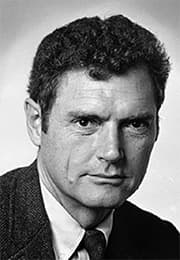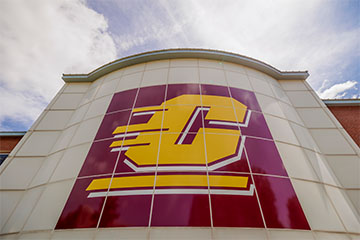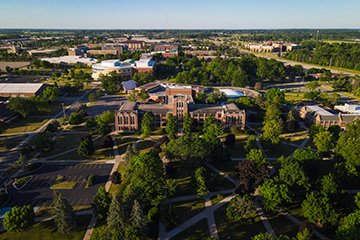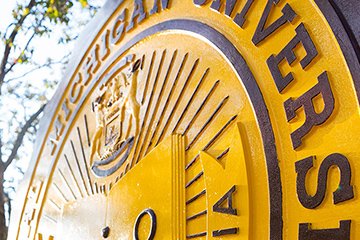Bill Boyd, CMU’s seventh president, dies at age 97
Former president remembered for legacy of peace on campus
 Former President William B. "Bill" Boyd, who led Central Michigan University from 1968 through 1975, died Dec. 16 at his home in Racine, Wisconsin. He was 97.
Former President William B. "Bill" Boyd, who led Central Michigan University from 1968 through 1975, died Dec. 16 at his home in Racine, Wisconsin. He was 97.
"The entire CMU family is saddened by the loss of former president Bill Boyd," said CMU President Bob Davies. "I was aware of his legacy before I joined CMU, and it lives on today. Our university is a better place because of his leadership."
Coming to Mount Pleasant from the University of California at Berkeley, Boyd began his service as CMU's president on July 1, 1968.
>>Read about President Boyd's inauguration at CMU
Boyd was one of Central's most beloved former presidents, and his contributions and accomplishments to the university were abundant. Most notably, he was very influential in making improvements in and around campus through the initiation of a campus beautification project.
Boyd also left a legacy at CMU of peace during a politically charged time. His work to create better lines of open communication was essential in supporting student nonviolent activism, particularly in regard to the 1969 October and November Moratorium events to stop the war in Vietnam, and then again in reaction to killings on the campus of Kent State University in May 1970.
Additional highlights of his presidency:
- The off-campus education program and the Honors Program began.
- CMU became a Division I-A university and joined the Mid-American Conference.
- Buildings built or opened: Charles V. Park Library; Moore Hall; Foust Hall; Perry Shorts Stadium (now Kelly/Shorts Stadium); Rose/Ryan Center (now the John G. Kulhavi Events Center); and the original Towers residence hall complex: Carey, Cobb, Troutman and Wheeler.
- Leading the establishment of an affirmative action hiring policy.
- CMU faculty formed a union and underwent collective bargaining with the university administration for the first time.
- Boyd placed emphasis on student diversity, recruiting minority students to campus and establishing sensitivity training for campus police.
- CMU's public radio station grew from a 10-watt campus radio station to a 1,000-watt station heard throughout Isabella County.
- Boyd arranged funding and design of the North Art Studio with Alden B. Dow but left CMU before it was built.
Boyd left CMU in the summer of 1975 to become president of the University of Oregon, where he led until 1980. At Oregon, his many accomplishments included strengthening of the provost model, which allowed the president to focus on broader, long-range planning. However, he may be remembered mostly for giving permission to film "Animal House" on the UO campus.
Boyd then became president — and then president emeritus — of the Johnson Foundation in Racine, Wisconsin, where he resided with his wife, Karen Johnson Boyd. After his retirement from the foundation in 1988, the couple traveled the world — India, Bhutan, New Guinea, Northern Australia and the Pacific Islands.
During an interview for Centralight magazine in 2014, Boyd was asked if he had a message for the CMU folks who remember him. "Tell 'em I love 'em," he said.
A celebration of his life will be held at a future date.
*Photos courtesy of the Clarke Historical Library



fe6aa657-37f3-42de-83ed-16b48c65c459.jpg?sfvrsn=b53290a7_2)
